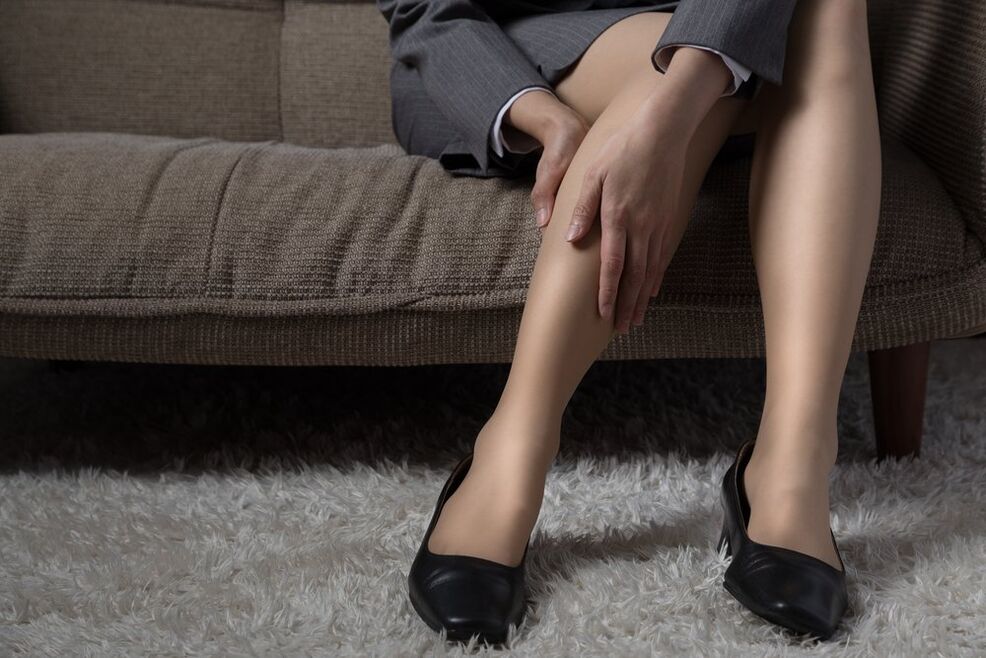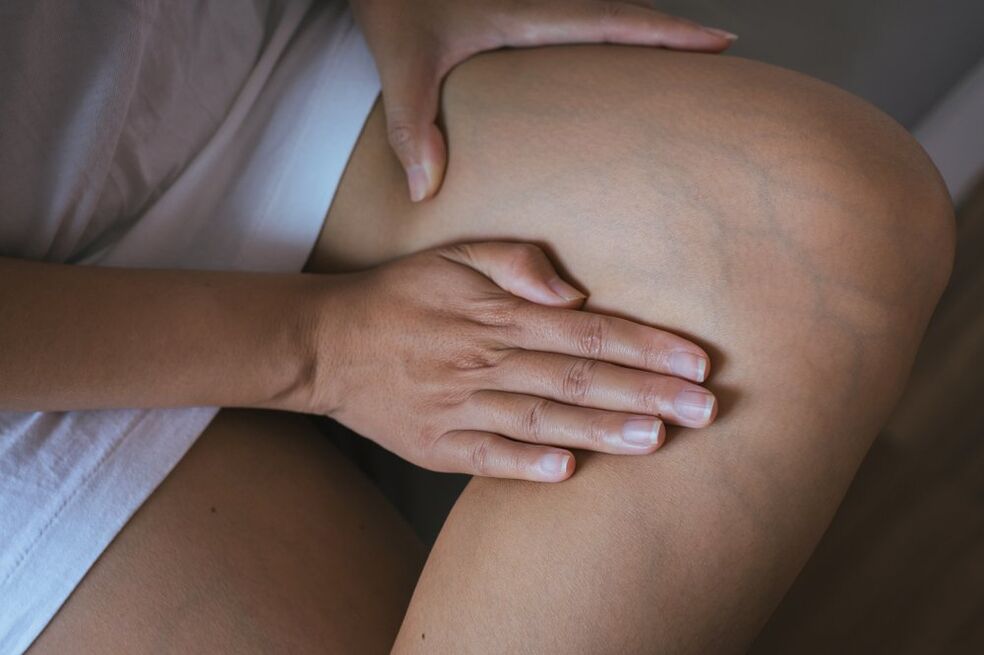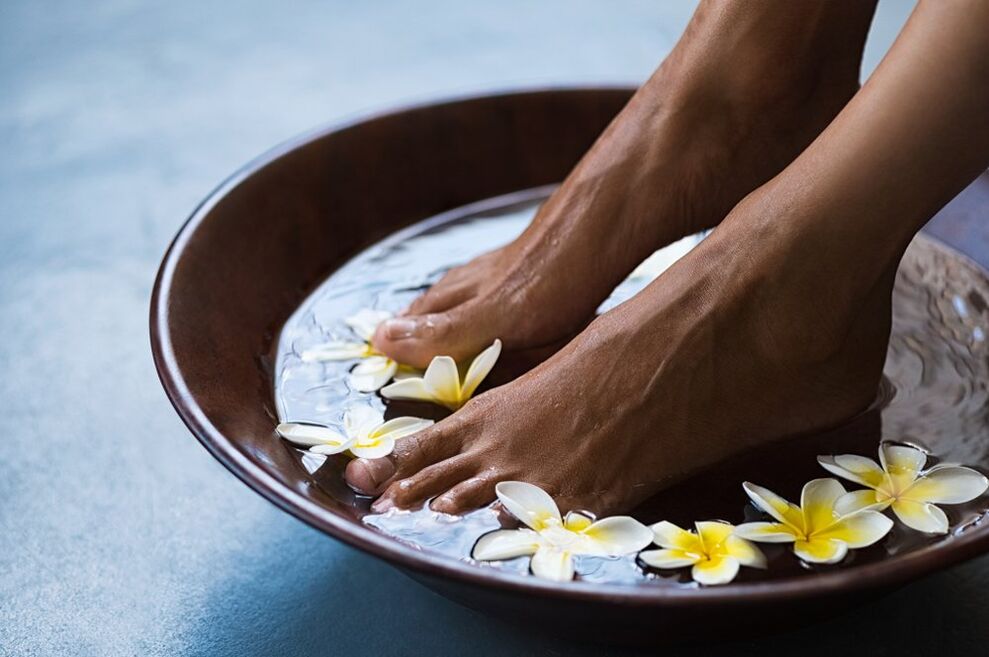
Varicose veins are one of the most common vascular diseases. Every third woman and every fifth representative of the strong half of the world community faces such a problem.
This is a chronic disease characterized by a violation of blood outflow, which increases pressure on the veins. The blood vessels are equipped with valves that only allow the blood to flow upwards so that it does not stagnate in the lower extremities. When the valves are disturbed, blood flow becomes chaotic, after which the development of varicose veins on the legs occurs, and treatment in this case should be carried out immediately.
In the absence of timely treatment of the disease, complications often arise, thrombophlebitis is diagnosed. There is even a risk of death. How to prevent the deterioration of the blood vessels of the lower extremities, the formation of nodes on them, as well as a dangerous disease, the article will tell.
Why do varicose veins appear?

Enlarged veins in the legs occur for a number of reasons. In addition to being a cosmetic defect, they indicate serious problems with blood drainage. Factors that determine the development of varicose veins include:
- obesity, which increases the load on the veins of the lower extremities;
- Addiction to bad habits such as smoking, taking alcoholic beverages, drugs of natural and artificial origin;
- heavy physical work that puts a lot of strain on the legs;
- an abundance of tasty, unhealthy food;
- high frequency of stressful situations;
- genetic predisposition;
- hypodynamia, which creates favorable conditions for stagnation in the vascular system and deterioration of blood circulation in the patient's body;
- weak muscular framework of the legs caused by a lack of desire to regularly do gymnastic exercises and activate the work of muscle fibers;
- thin vessel walls.
Such reasons create favorable conditions for the expansion of large blood vessels of the lower extremities, the appearance of noticeable swollen nodes on them.
Who needs varicose vein prophylaxis and why?
Prevention refers to an effective and efficient method of preventing varicose veins. There are different categories of vulnerable people:
- Women who are past the age of 30 and are going through menopause;
- Gourmets and lovers of sweets, fatty foods that lead to extra pounds;
- Representatives of professions associated with prolonged standing, sitting on a chair in one position or moving weights;
- Athletes, the brunt of which falls on their legs: weightlifters, runners, skaters, cyclists, rowers;
- fashionistas who prefer to create their stylish attractive look with high-heeled shoes, tight tight dresses;
- people leading an inactive lifestyle;
Pregnant women are also at risk and may face the problem of swollen veins in their legs. The increased content of hormones in their body, the development of the fetus leads to an increase in the volume of blood transported through the venous vessels. Prevention of the disease will help avoid its development after childbirth. Timely prevention of varicose veins can significantly improve the condition of the veins in the legs, strengthen the walls of blood vessels, normalize blood circulation, avoid the appearance of ugly knots and the formation of blood clots. A severe course of the disease, the treatment of which requires urgent surgical intervention, can be avoided.
How can you prevent varicose veins?
Prevention of varicose veins involves lifestyle changes and performing a number of activities that should become a habit for potential patients of phlebologists. To avoid the development of a dangerous vascular disease, you should:
- Exclude flour, sweet foods from the diet;
- limit the use of salt, smoked meat, alcoholic beverages, coffee, strong meat broths;
- lead an active lifestyle;
- perform industrial gymnastics at workplaces associated with prolonged standing and sitting;
- to prevent the lifting of weights that exceed the permissible norms;
- consume a sufficient amount of vitamins, minerals and trace elements;
- at the first signs of varicose veins, wear compression underwear, the class of elasticity of which is determined by a phlebologist;
- quit smoking, visit baths, saunas;
- regularly visit gyms, fitness centers, swimming pools, go swimming, water aerobics, which are considered the best activities for the prevention of varicose veins;
- perform exercises recommended for improving blood circulation and available for home use;
- Use recipes of traditional medicine to improve the condition of the venous vessels in the legs.
The implementation of such simple recommendations is guaranteed to help eliminate the risk of developing a dangerous disease and the appearance of its characteristic signs.
Useful exercises to prevent expansion and deformation of the veins in the legs
Performing simple exercises to prevent vascular pathologies of the lower extremities improves blood circulation in body tissues, strengthens the walls of blood vessels, eliminates congestion and prevents varicose veins. These include:
- Lie prone on the floor, raise your legs and pull the toes of your foot toward you at least 10 times.
- Perform the "Birch" exercise for 5 sets while holding the pelvis for 15-20 seconds.
- Lying on the floor, raise your legs and perform circular movements with your feet in one direction and the other side 10-15 times.
- Raise socks, behind your knees, at least 10 times on each leg, sitting on a chair.
- Sipping, standing on tiptoe, getting up with the number of repetitions 10-20 times.
- From a seated position on a chair, rock your heels back and forth 15 times with each foot.
Recipes of traditional medicine to improve the condition of blood vessels

To always keep the veins in the legs healthy, lovers of alternative medicine recommend using baths, lotions, liniments and compresses prepared according to recipes of traditional medicine. The effectiveness of these methods has not been proven, and it is better to consult a doctor before using them. These methods include:
- rub problem areas with chilled parsley broth with the addition of a few drops of rose oil;
- apply to the inflamed veins on the legs of green tomatoes, cut in half until a burning sensation appears;
- a compress from a decoction of calendula, made from the flowers of a medicinal plant and water in a ratio of 1: 4;
- Ointment, which consists of 1 raw yolk, 1 tbsp. l. honey and 1 tbsp. l. Vodka and should be applied to inflamed veins for several hours.
Remember that varicose veins are easier to prevent than to treat!



















